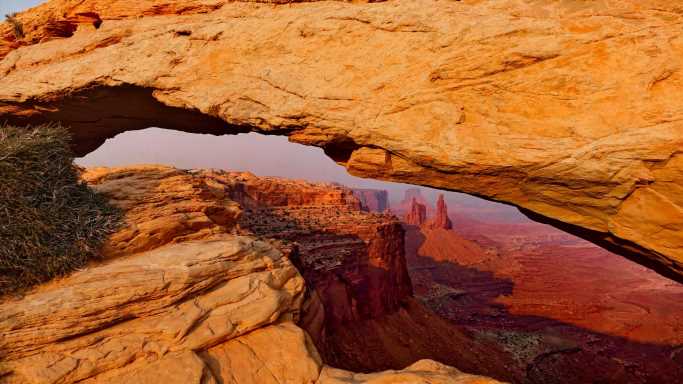Perhaps one silver lining of the COVID-19 pandemic, especially for people who love the outdoors, is that people were forced to spend more time outside. According to a OnePoll survey from September 2020, about 60% of the 2,000 participants said they did not appreciate nature as much as they should have before the pandemic. About 40% said they actually had become more physically active, engaging in outdoor activities.
For most of 2020, people were asked to avoid getting together or meeting indoors. Instead, many turned to parks. As health officials discouraged nonessential travel, international tourism nearly screeched to a halt and some parks closed for a portion of the year. Visitations to national parks fell by about a third in 2020 compared to 2019. Still, millions of Americans ventured out into the wilderness.
To identify the national park that has grown most in popularity, 24/7 Tempo reviewed data on the change in recreational visits between 1980 and 2020, published in the National Park Service’s annual visitation report.
The vast majority of parks on the list gained popularity until 2019, but visits dropped in 2020 as access was restricted due to COVID-19 and attendance dropped. For example, recreational visits to the Glacier Bay National Park and Preserve in Alaska increased from merely 95,000 in 1980 to over 672,000 in 2019 but dropped to nearly 6,000 in 2020.
Another national park in Alaska had a similar fate. More than 216,000 people visited Denali National Park and Preserve. The number of visitors grew to more than 601,000 in 2019, only to collapse to about 55,000 in 2020.
Over the past four decades, the list of the most popular national parks every year has remained largely unchanged, with Great Smoky Mountains along the North Carolina and Tennessee border topping the charts every year. These all-time favorite parks have seen 20% to 50% growth in the number of visits over the years. Other parks that are somewhat less popular, however, have seen a growth of more than 700%.
Exploring the wilderness, hiking through mountains and sleeping under the stars are just some of the nature experiences these parks have to offer, often free of charge.
As mentioned, to identify the national park that has grown most in popularity, 24/7 Tempo reviewed data on the change in recreational visits between 1980 and 2020 published in the National Park Service’s annual visitation report. The service aggregates visitation data for various government land designations and visitation purposes. Only those places designated National Parks (NP) and National Parks and Preserves (NP & PRES) were considered in our analysis.
To avoid double-counting land area, designations such as national monuments and historic sites, which are frequently contained within national parks and often are limited to single structures, were excluded.
Visitation data for each park for 2019 was also obtained from the National Park Service. Gates of the Arctic NP & PRES, Kenai Fjords NP, Kobuk Valley NP and Lake Clark NP & PRES were excluded because they were officially established as national parks on Dec. 2, 1980, and were not in the National Park Service data for 1980 visits.
Congaree NP and NP of American Samoa were excluded because they were not officially established as national parks until 2003 and 1988, respectively, and were not in the data for 1980.
The National Park Service did not have recreation visits data for New River Gorge NP & PRES and Wrangell-St. Elias NP & PRES, which were established as national parks in 1978.
Canyonlands National Park had the largest change in number of visits from 1980 to 2020 at 774.1%. Here are some more details:
- Recreation visits in 1980: 56,505 (0.10% of all NP recreation visits in 1980)
- Recreation visits in 2019: 733,996 (0.81% of all NP recreation visits in 2019)
- Recreation visits in 2020: 493,914 (0.73% of all NP recreation visits in 2020)
- Change in visits, 1980 to 2019: 1,199.0% (the largest increase)
Click here to see which national parks had the largest change in popularity.
Get Our Free Investment Newsletter
Source: Read Full Article
